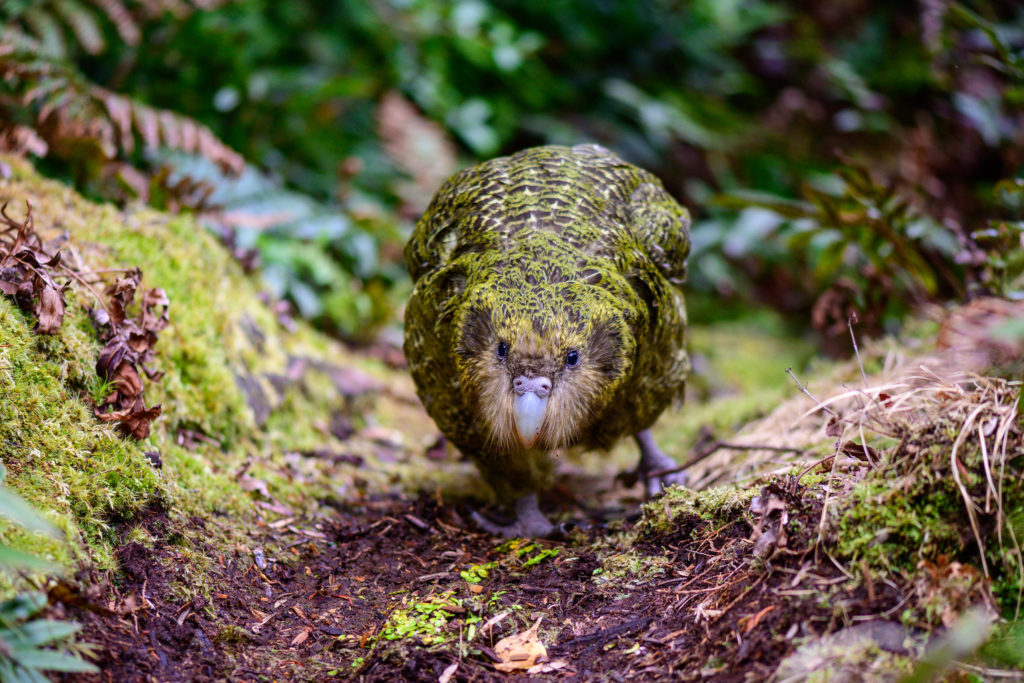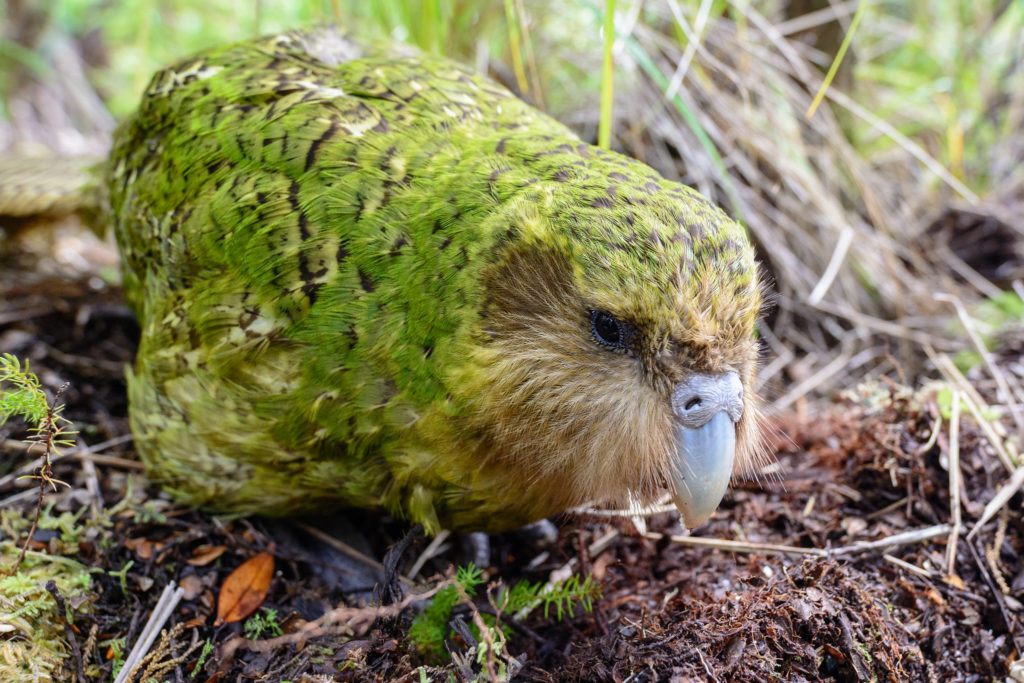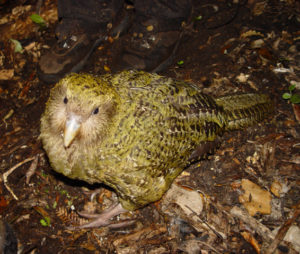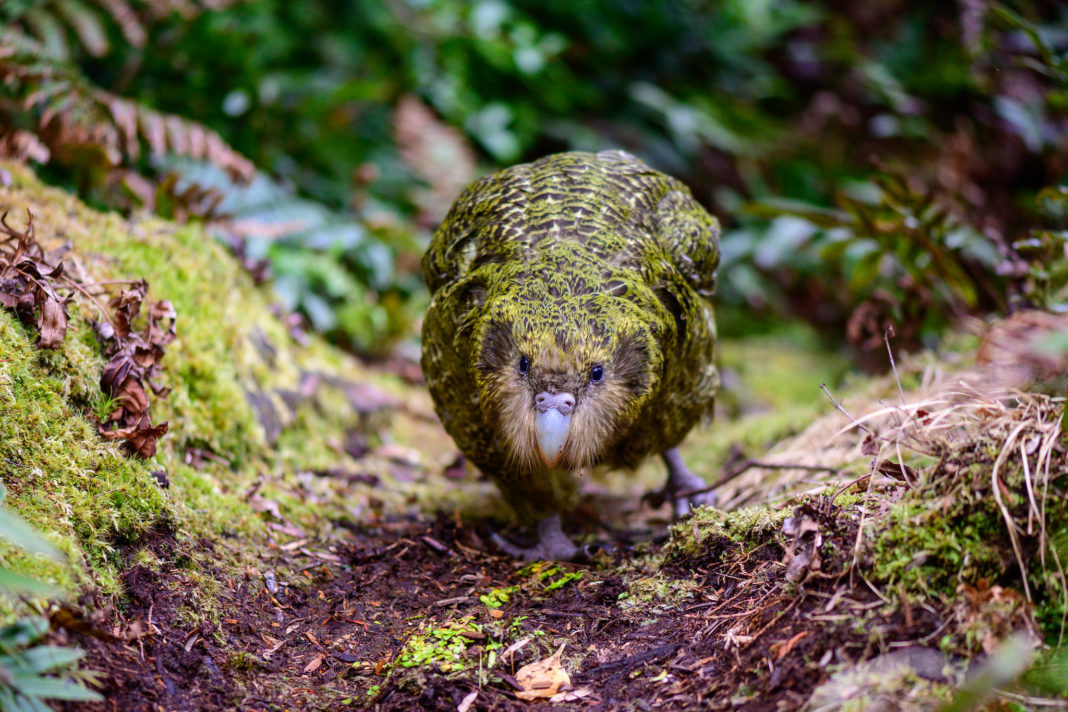The kākāpō, sometimes known as the owl parrot, is a species of large, nocturnal, ground-dwelling parrots of the super-family Strigopoidea. It is endemic to New Zealand.

Kākāpō can be up to 64 cm long. They have a combination of unique traits among parrots: finely blotched yellow-green plumage, a distinct facial disc, owl-style forward-facing eyes with surrounding discs of specially-textured feathers, a large grey beak, short legs, large blue feet, relatively short wings and a short tail.

The kākāpō is the world’s only flightless parrot, the world’s heaviest parrot, and also is nocturnal, herbivorous, visibly sexually dimorphic in body size, has a low basal metabolic rate, and does not have male parental care. It is also possibly one of the world’s longest-living birds, with a reported lifespan of up to 100 years. Adult males weigh around 1.5–3 kilograms; the equivalent figure for females is 0.950–1.6 kilograms.

The kākāpō is critically endangered; the total known population of living individuals is 247 as of 2023. Known individuals are named, tagged and confined to four small New Zealand islands, all of which are clear of predators; however, in 2023, a reintroduction to mainland New Zealand (Maungatautari) was accomplished. Introduced mammalian predators, such as cats, rats, ferrets, and stoats almost wiped out the kākāpō. All conservation efforts were unsuccessful until the Kakapo Recovery Programme began in 1995.
According to the Internet















